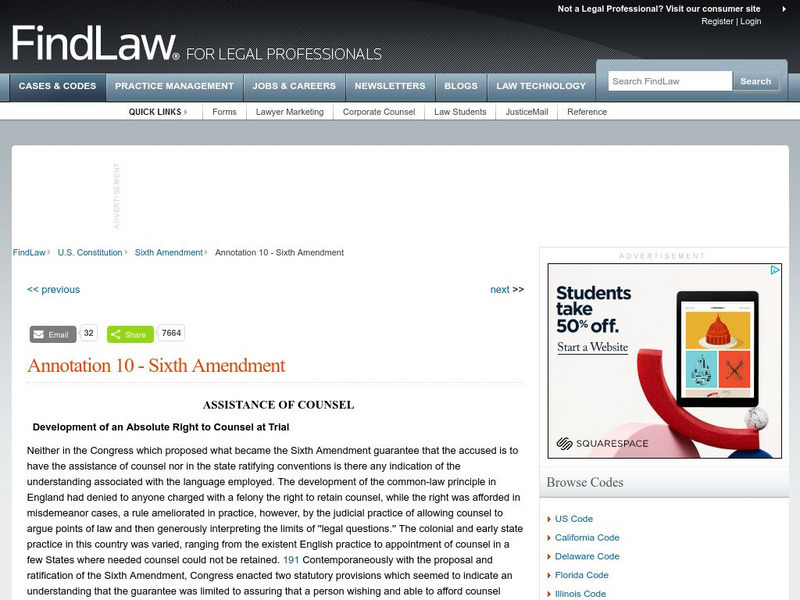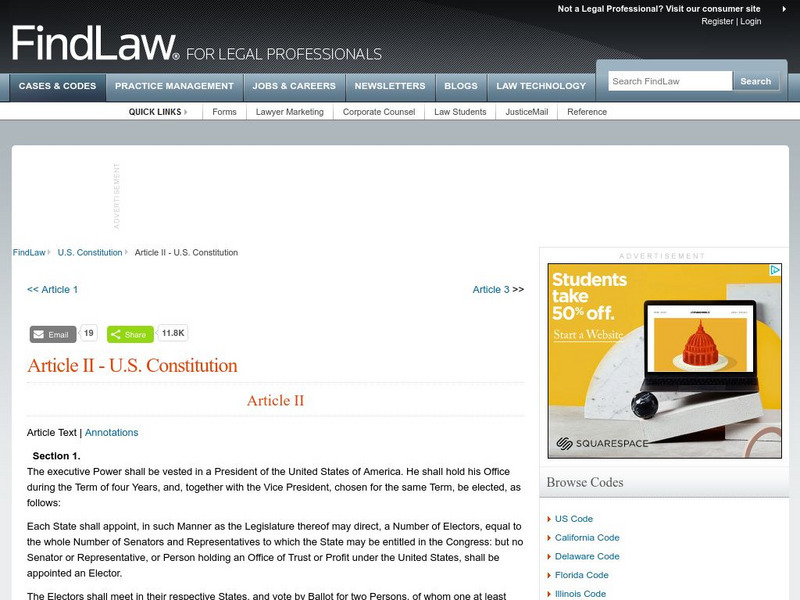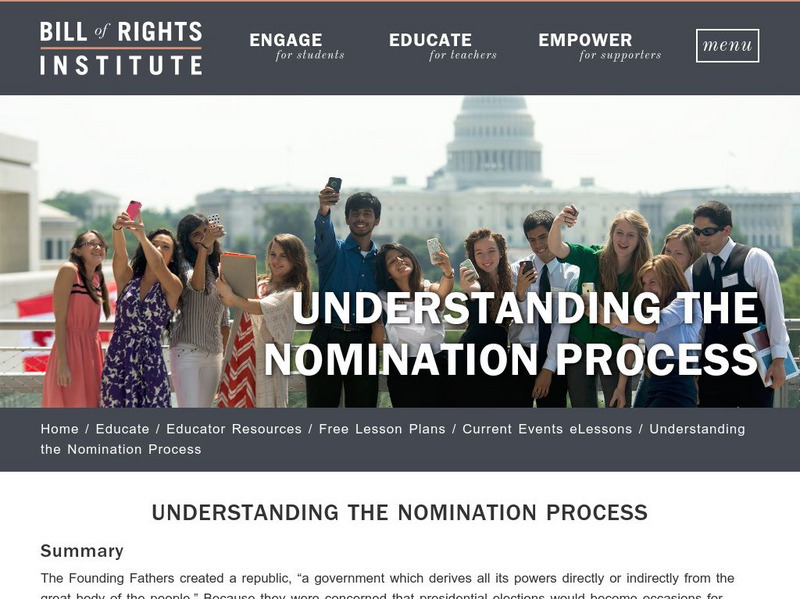Teaching American History
Teaching American History: The Federal Pillars
An overview of the order in which the states ratified the Constitution. Find an assortment of newspaper clippings recognizing the ratification process across the states.
Teaching American History
Teaching American History: State by State Ratification Table
A chart illustrating the order of states as they ratified the new constitution. Find the delegates from the states, vote, population, and outcomes.
Teaching American History
Teaching American History: Federalist Antifederalist Debates
A comprehensive resource enriching studies of the debates over the new Constitution includes biographies, timelines, Federalists and Antifederalists.
Teaching American History
Teaching American History: From Bullets to Ballots Chapter 2
John Zvesper's second chapter in his book, From Bullets to Ballots: The Election of 1800 and the First Peaceful Transfer of Political Power discusses the Lessons in Constitution Making.
US Senate
United States Senate: Constitution of the United States
The complete text of the Constitution can be read here. Each section is accompanied by an explanation of what it means in lay language.
Annenberg Foundation
Annenberg Learner: Democracy in America: The Constitution: Fixed or Flexible?
This unit explores the timeless qualities of The U.S. Constitution, the opportunities to amend it, and how it is a pillar of the American identity, through these activities, videos, and outside resources.
Other
Page by Page: Constitution of the u.s. Article One
Article One of the Constitution of the United States of America presented by Page by Page Books.com
Thomson Reuters
Find Law: Annotation 10: Sixth Amendment: Assistance to Council
This article uses specific court cases to show how the right to counsel at trial was developed into the present day standard.
Thomson Reuters
Find Law: u.s. Constitution: Article I, Section 6
This resource presents section 6 of article 1 of the U.S. Constitution, which details the rights and disabilities of members of Congress. The site discusses congressional pay, and privileges from arrest and of speech or debate in an...
Thomson Reuters
Find Law: Article Ii: The President as a Law Enforcer
Read Section 3 of Article II which explains what the President's duties are as Law Enforcer. The Constitution does not state that the President shall execute the laws himself, but that he will ensure that laws are "faithfully executed."
Thomson Reuters
Find Law: Article Iii: Federal State Courts Relations
This resource shows the relationship between the Federal and State Courts as stated in Article III of the U.S. Constitution. This annotated text details issues like problems raised by concurrency, autonomy of state courts, and rules of...
Thomson Reuters
Find Law: u.s. Constitution: Fourteenth Amendment
This resource gives the text of the 14th Amendment and includes annotations, which are helpful to understand interpretations and uses of the amendment.
Thomson Reuters
Find Law: u.s. Constitution: Eighteenth Amendment
The 18th amendment regarding the prohibition of intoxicating liquors, as it is worded in the U.S. Constitution. Annotations about the validity, enforcement, and repeal of the amendment are provided, as well as footnotes.
Thomson Reuters
Find Law: United States Constitution: Article Ii
Full text of Article II from the U.S. Constitution, as well as detailed annotations that explain the reasoning and subsequent impact of each clause and section of the Article. Content explores everything from the nature and scope of...
Thomson Reuters
Find Law: u.s. Supreme Court: Escobedo v. Illinois (1964)
A detailed description of the United States Supreme Court decision on the appeal of the case Escobedo v. Illinois, which ruled on the right to have counsel under the 6th and 14th Amendments to the Constitution.
Other
Constitution Day
Constitution Day commemorates the formation and signing of the U.S. Constitution by thirty-nine brave men on September 17, 1787, recognizing all who, are born in the U.S. or by naturalization, have become citizens. Learn about each of...
Center For Civic Education
Center for Civic Education: 9/11 and Constitution: American Identity, Diversity
A set of lessons that can be used to commemorate the anniversaries of the terrorist attacks on the United States on September 11, 2001, and the signing of the Constitution on September 17, 1787. They help students to reflect on the...
US National Archives
Nara: Charters of Freedom: The Bill of Rights
This site contains a complete transcription of The Bill of Rights, along with zoomable graphics of the original handwritten text. It also includes information about the historical context of the document, links to more constitutional...
Library of Congress
Loc: Constitution
Collection of primary resources having to do with the constitution throughout American history.
Bill of Rights Institute
Bill of Rights Institute: Understanding the Nomination Process
From its conception in the United States Constitution, to necessary adjustments in the 12th Amendment, students will understand the nomination process and role of political parties in establishing a president with the aid of this lesson.
iCivics
I Civics: The Constitution: Rules for Running a Country
Handy introduction to the Constitution of the United States, which has been our government's rulebook since 1789.
US National Archives
Nara: Teaching With Documents: u.s. Constitution Workshop
A workshop, appropriate for elementary, middle school, and high school young scholars, through which participants examine a variety of primary documents and their relationship to the U.S. Constitution. This resource provides workshop...
US National Archives
Nara: Charters of Freedom: Constitution of the United States
Comprehensive overview of the U.S. Constitution. Places the Constitution in context with two other founding charters of American democracy and government, the Declaration of Independence and the Bill of Rights. Includes access to digital...
Yale University
Avalon Project: Resolution of Congress of September 28, 1787
The original text of the resolution of Congress submitting the newly drafted constitution to the states for ratification.




















